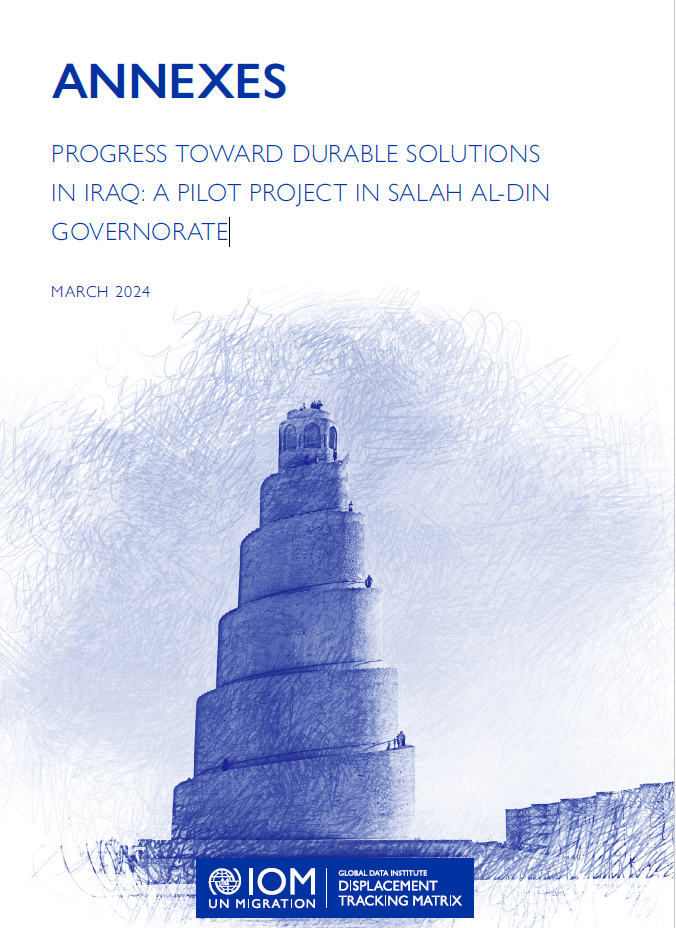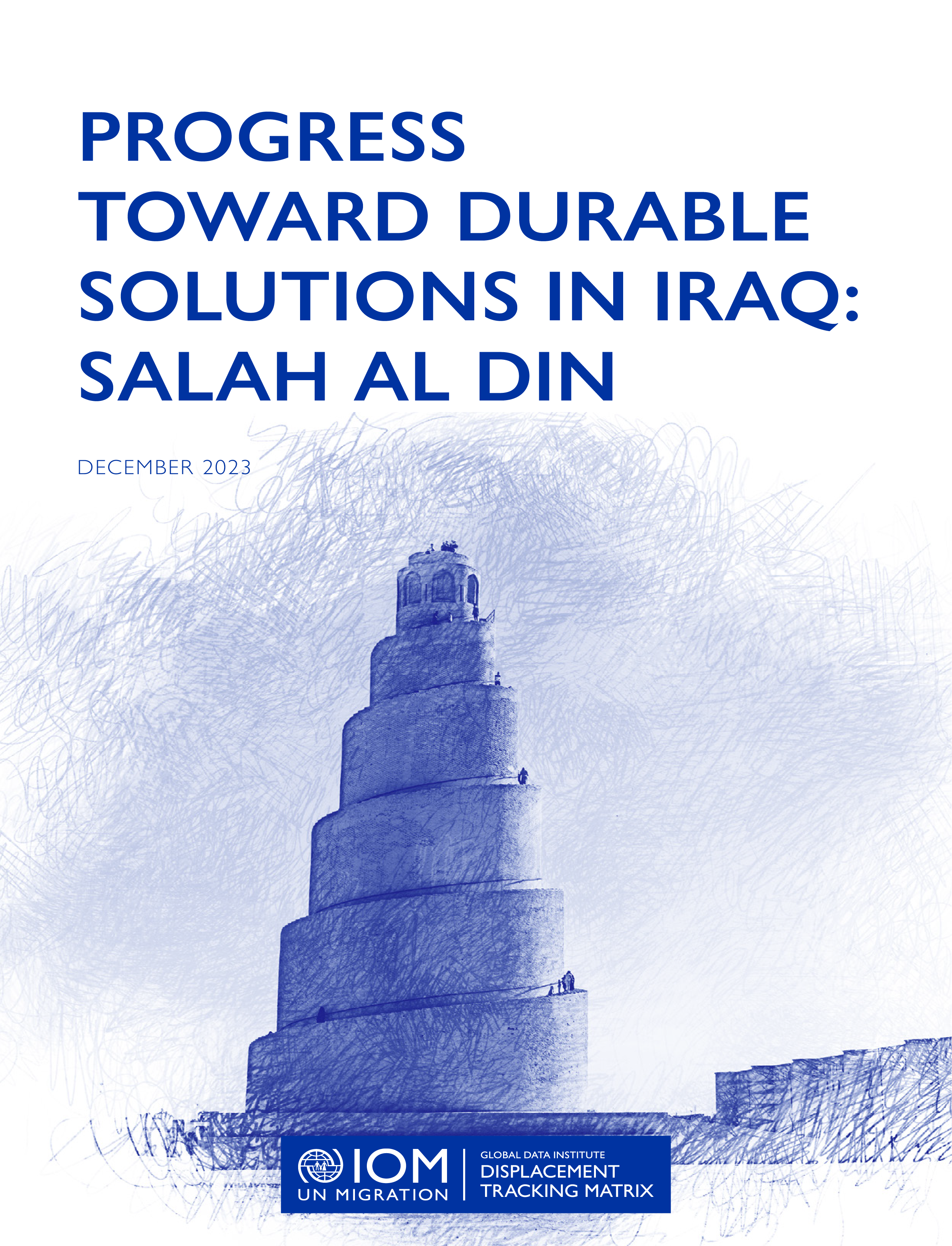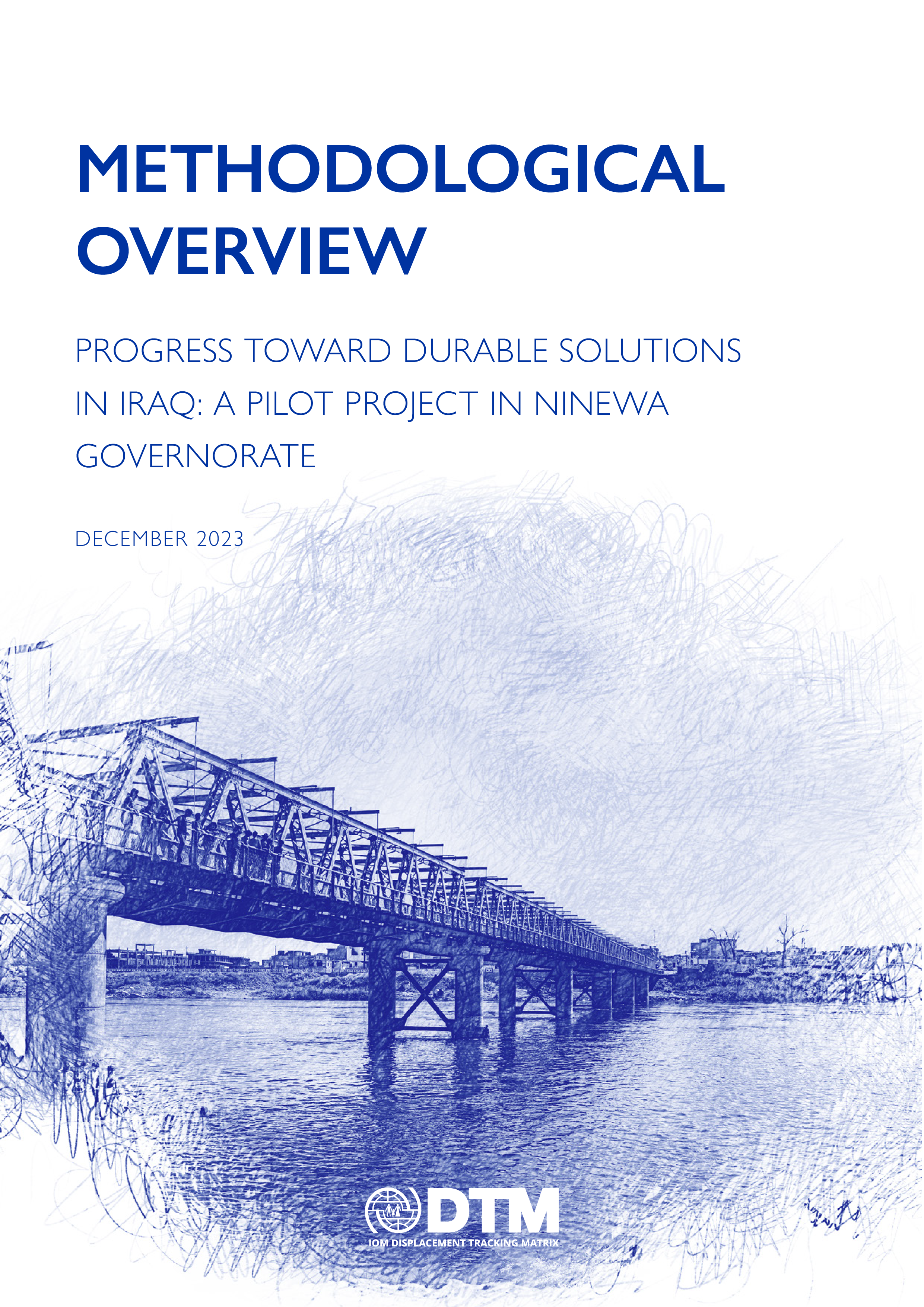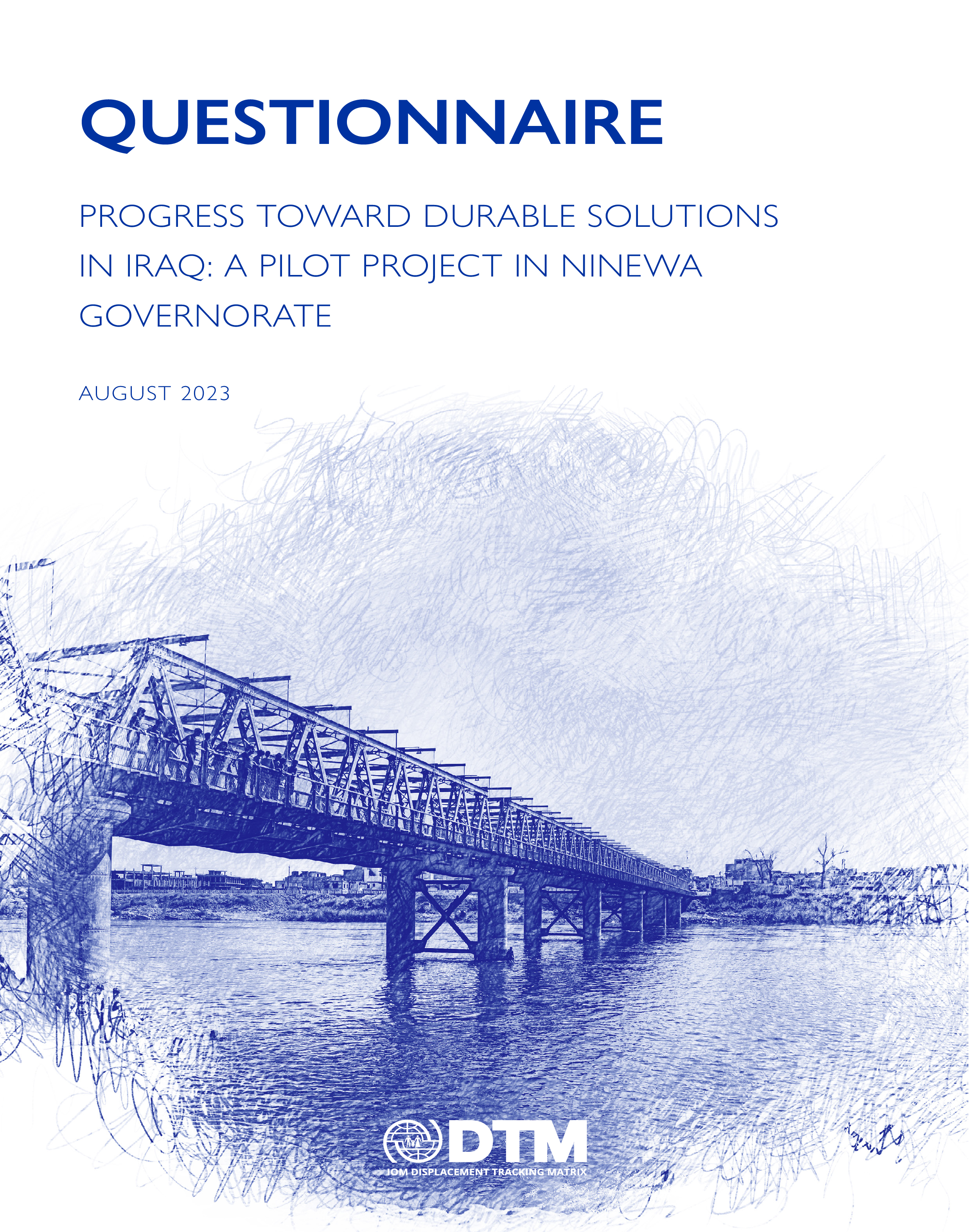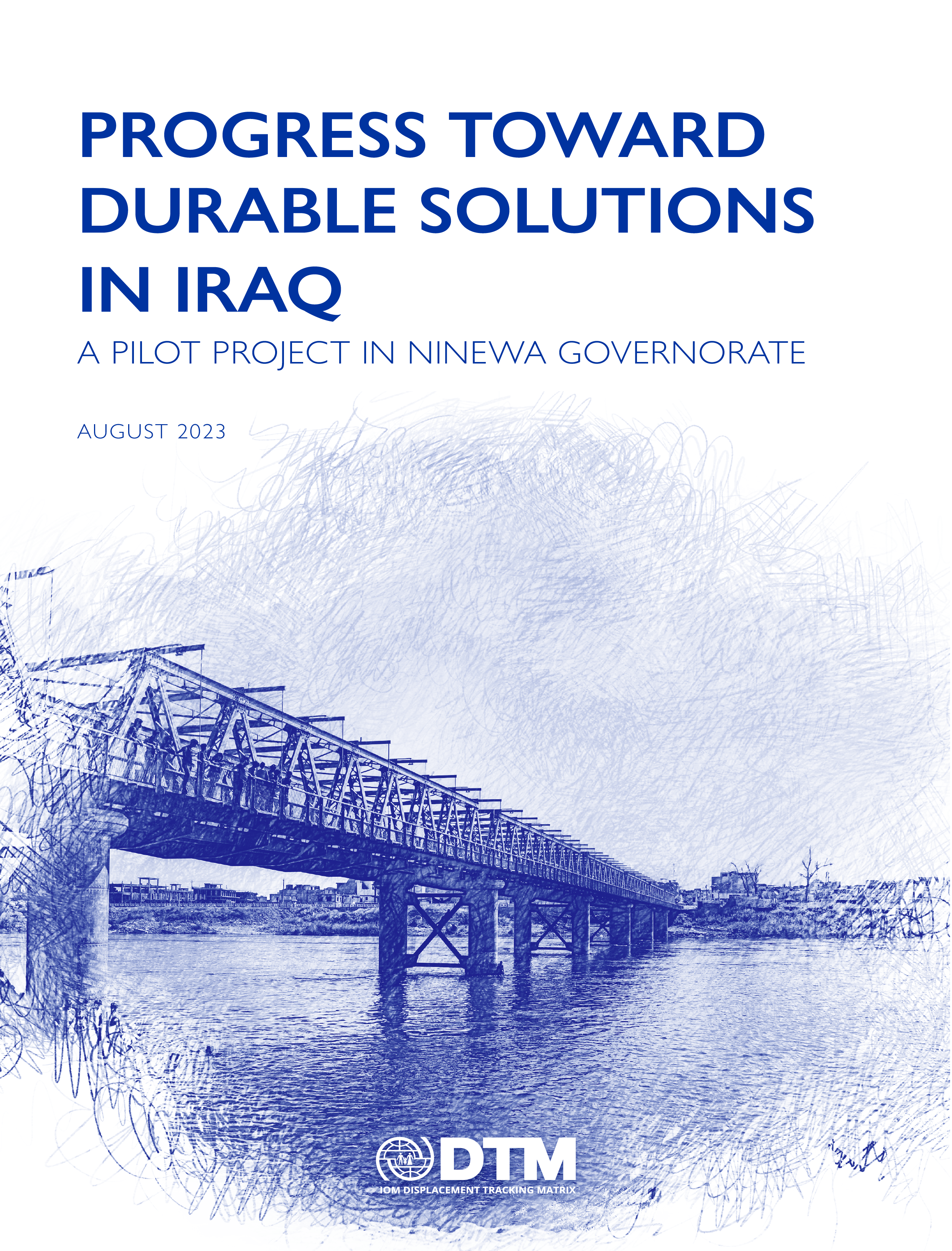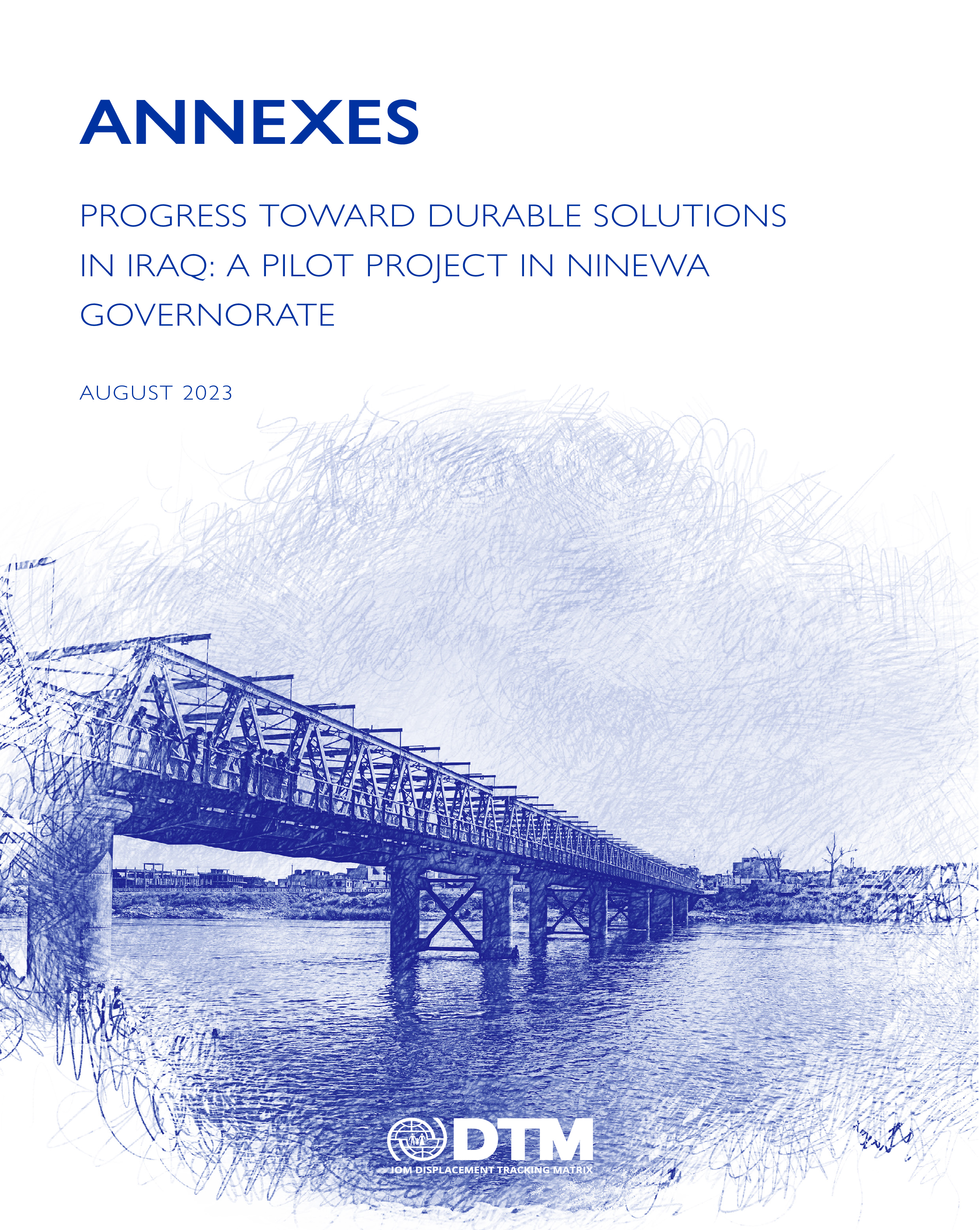Progress Towards Durable Solutions Reports
Progress Towards Durable Solutions Datasets
This assessment measures progress towards durable solutions across five domains: 1) safety and security; 2) adequate standards of living; 3) access to livelihoods; 4) restoration of housing, land and property and compensation and 5) personal documentation and participation. As such, it considers not only IDPs’ and returnees’ quality of life but also their ability to exercise their rights and obtain justice for harms linked to their displacement, such as housing destruction. The analytical framework and indicators for this assessment draw on the Framework for Durable Solutions produced by the Inter-Agency Standing Committee (IASC) and the recommendations provided by the Expert Group on Refugee and Internally Displaced Persons (EGRIS) on IDP statistics.
METHODOLOGY
Data collection for this report took place in November 2022 across 9 districts and 36 subdistricts in the Ninewa Governorate
of Iraq. IOM’s Rapid Assessment and Response Teams (RARTs), composed of over 73 staff members (40% of enumerators are female),
conducted 8,042 structured, face-to-face interviews with roughly equal numbers of IDP, returnee and stayee households (around
2,600 interviews per group).
Sampling frame
The IDP and returnee sampling frame is based on DTM’s Master List Round 127 (July-September 2022), while the sampling frame for stayees draws on 2021 population data from the Central Statistical Office, Ministry of Planning of the Republic of Iraq.
Sampling procedure
A two-stage sampling procedure was used. Firstly, locations in each subdistrict were randomly selected with a probability proportional to their population size. In simple terms, this means larger locations had a higher chance of being selected for assessment.
Only locations with IDP or returnee households present were selected.
Secondly, IDP and returnee households were randomly selected based on the total number of households in the location. Stayee
households were randomly selected based on the total number of stayees in the subdistrict. In cases where few stayee households
resided in the selected location, the sample was met using other households in the subdistrict.
Due to access constraints, only four of the eight IDP camps present in Ninewa governorate at the time of assessment were included in the survey.
DEFINITIONS
| Term | Definition |
|---|---|
| Durable Solution | A durable solution is achieved when internally displaced persons (IDPs) no longer have any specific assistance and protection needs that are linked to their displacement and can enjoy their human rights without discrimination on account of their displacement. . |
| Internal Displaced Person (IDP) | Person or groups of persons who have been forced or obliged to flee or to leave their homes or places of habitual residence, in particular as a result of or in order to avoid the effects of armed conflict, situations of generalized violence, violations of human rights or natural or human-made disasters, and who have not crossed an internationally recognized State border. IOM DTM Iraq considers IDPs all Iraqi nationals who were forced to flee from 1 January 2014 onwards. |
| Returnee | IDPs who have returned to their place of habitual residence, the place where they used to live at the time of the displacement-causing event. IOM DTM Iraq considers as returnees all those displaced since January 2014 who have returned to their location of origin, irrespective of whether they have returned to their former residence or another shelter type. The definition of returnees is not related to the criteria of returning in safety and dignity, nor with a defined strategy for ensuring durable solutions. |
| Stayee | The population who was not forced or obliged to flee or to leave their homes or places of habitual residence and lives in close proximity to IDPs or within the geographical area where IDPs reside (including the area surrounding IDP camps or settlements). In this analysis, this group is used as a baseline to assess displacement- or return-related vulnerabilities exclusively for this project. |
| Household | Group of people who regularly share meals, income and expenditures together. Members must acknowledge the authority of one person as head of household and that person must actually live with the rest of the household members. In polygamous households, each wife is treated as a distinct household when the wives live in different houses, cook separately and take decisions independently. |




